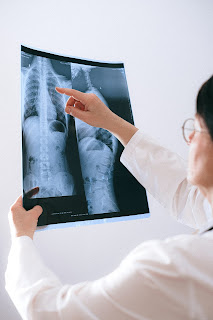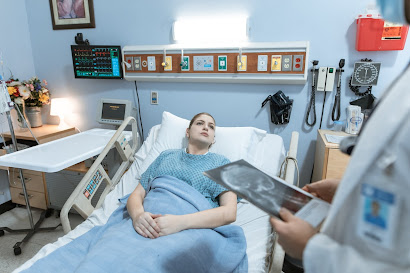MEDICO-LEGAL CHALLENGES IN ORTHOPAEDIC SURGERY©
We are all aware of
the rapidly changing scenario of medical practice in this country. Doctors are
no longer surrounded by an aura of infallibility and the expectations of the
public have risen sharply in an era of hi-tech medicine. Sub-optimal or adverse
outcome of treatment is not accepted easily and often automatically equated to
negligence/ deficiency in service. As a result, there is an exponential rise in
medical litigation, especially in the wake of the Consumer Protection Act.
Undoubtedly,
certain medical specialties are more prone to risks of malpractice litigation
and are considered high-risk. For example, in India Obstetrics is the branch of
Medicine at highest risk of malpractice litigations. Orthopedic
surgery is lower down in the list though still in the high-risk group. (see
chart below)
Hence it is prudent for Orthopedic surgeons to be cognizant of the vulnerable risk factors.
I would like to share the
findings of this informal study.
In the US, the average percentage of Orthopedic litigation is stated to be 20 % as per a number of their studies.
I believe, in the contemporary
Indian scenario a ballpark figure for
Orthopedic surgery in our country would
be around 15 %.
No.1 Cause of Malpractice Litigation in Orthopaedics
Surgical site infection,
non-union of fractures, malunion, and implant failure are the leading causes of
malpractice claims. Practicing evidence-based medicine and adhering to established guidelines and
protocols formulated by peer groups is one way of preventing allegations of negligence. Every
unsuccessful surgery does not add up to negligence. One can easily defend
oneself by remembering the following
definition of Negligence namely: A deviation from the standard of care which results in damage to
the patient. Hence to absolve yourself of the charge of negligent treatment, all you have to do is to be able to demonstrate that the treatment you gave
or the procedure you carried out was what any reasonably competent practitioner
would have done in similar circumstances. Merely because the end result was
unfavorable does not establish negligence.
As far as the mode or
choice of treatment is concerned it is
at the discretion of the surgeon. For example, fixing a fracture by nailing or
plating has to be the decision of the surgeon, though it is a good idea to
explain the pros and cons of each option to the patient before the surgery.
In a case of comminuted fracture of tibia and fibula following RTA, internal fixation with interlocking tibial nail was done. This was followed by non-union. At another hospital External fixator applied, plate fixation and grafting was done, The patient alleged that it was wrong to have done nailing which had caused infection and non-union. A complaint was filed in the Consumer forum for damages. However, the case was dismissed and the surgeon was exonerated. The following excerpt from the judgment, will provide solace to my orthopedic colleagues and assure them that the mere fact that some complication arose, is not evidence of culpability of the surgeon.
“Does failure to deliver results amount to deficiency? With respect to
the service of a professional, the answer to this question is a definite NO.A
professional is expected to do what a reasonable practitioner would do under
similar circumstances and he is not expected to guarantee results. Hence in the
instant case, we do not feel the non-union of the fracture amounts to deficiency
of service on the part of the doctor “
Another quote from a judgment in another similar case:
“Any
professional does not assure his client of the result. A lawyer does not tell
that his client shall win in all cases. A physician cannot assure the patient
recovery to the extent of 100 %”
Spine surgery is sometimes the cause of malpractice claims by patients. Operative morbidity or leading to paraplegia, bladder, and bowel dysfunction. In one case, per operative, accidental injury to the common iliac occurred whilst doing a laminectomy and the patient died of hemorrhagic shock.
Post-op
Pulmonary embolism leading to mortality
occurred in 3 cases. It is necessary to establish the fact that all measures
were taken for DVT /PE prophylaxis.
🔰2 cases of High Tibial Osteotomy were found in the study. In one case, post-op infection was the cause of the patient allegations and in the other case non-correction of the deformity was cited as the cause of ‘deficiency in service
A
patient underwent surgery for a fractured neck femur wherein a hip prosthesis was put. About 8
months later the patient had a fall at home.
X-ray hip revealed a fracture of the implant! The patient was re-operated
at another hospital whereupon he filed a complaint in the Consumer Forum
demanding compensation. The demand for damages was directed towards the Orthopedic
surgeon and the hospital where the earlier surgery had been done.
The
surgeon and hospital wanted to know how they could be held responsible for
fracture of the implant, but still the two were the only defendants in the
case.
In
what can be considered good news for doctors, the new CPA Act 2019 which was
notified in 2020 now has a specific provision, called PRODUCT LIABILITY. It has
been defined thus:
“Product
liability “is the responsibility of a product manufacturer or product seller of
any product to compensate for any harm caused to a consumer by such defective
product manufactured or sold” (Clause 34 in the CPA 19 Act)
Under
this provision the orthopedic surgeon in the above case could have deflected
liability for the loss to the patient to the Implant manufacturer--- citing a
defect in the product.
However,
invariably, the complainant will still make the surgeon a defendant. but a
good defense is available. A number of surgeons in India are still grappling
with the cases filed against Johnson and Johnson for the faulty hip implants
supplied by them worldwide. It was alleged that metal ions were leaking into
tissues and causing reactions. A class-action suit was filed in the USA.
The introduction of Product Liability in the new CPA 2019 is welcome as it can
shift the liability to the right quarters.
PREVENTIVE ASPECTS
I will conclude with my favorite one-liner: THE BEST WAY TO AVOID MEDICO-LEGAL PROBLEMS IS TO PREVENT THEM!
Please scroll down and post your comments in the comments section.



















👌
ReplyDeleteExcellent and very informative
ReplyDeleteSuperb sir. Really enjoy reading your blogs. Something new to learn each and every time 👍
ReplyDeleteDear Dr.Kapoor Sir,
ReplyDeleteWe get Very apt and useful guidance in case of any problems.
I was present in the audiance,when you delivered,K.T.Dholakia Lecture.
Was thoroughly impressed.
The way you guide taking in to consideration ,the minutest details if the case is unmatched.
Most of the lawyers also can't match that.
👍👍👍🙏
Dear Dr.Kapoor Sir,
ReplyDeleteWe get Very apt and useful guidance in case of any problems.
I was present in the audiance,when you delivered,K.T.Dholakia Lecture.
Was thoroughly impressed.
The way you guide taking in to consideration ,the minutest details if the case is unmatched.
Most of the lawyers also can't match that.
👍👍👍🙏
Rajesh Gandhi
Sir there is no match for you.
ReplyDeleteYou are the finest person. Who helps out of the way to everyone in need. Your knowledge is tremendous.
Dear Dr Lalit Kapoor
ReplyDeleteI am very happy to read your blog and articles written for our doctor colleagues. These articles will surely help doctors in their prevention of medico legal complaints. I congratulate you sir for sharing your knowledge to our practicing doctors. You have been helping selflessly all doctors who have been in trouble in their practice. Please continue to write your experiences and knowledge on this blog. You can publish E books for all our colleagues. Appreciate your great contributions in this medico legal matters.
Dear Sir,
ReplyDeleteIt was nice to read you. Thanks for all the contributions made by you in this department.
Nice and practical suggestions. Should be followed by all doctors.
ReplyDeletePractical advice very well articulated. Interesting and informative read
ReplyDeleteThere is no surgery without complications. When it comes to complications, it would be useful for every surgeon to develop a deep insight into his work by asking the following:
ReplyDelete1. Is there a risk of life changing complication ( Paralysis, incontinence, erectile dysfunction, blindness, aphasia to name a few)
2. Is there a risk of a complication which is an economical burden ( post operative renal failure necessitating hemodialysis for a few weeks, prolonged ICU care )
3. Is there a risk of a complication which may call for change of profession ( a diamond setter whose dominant wrist gets frozen )
4. Can there be a nagging complication which takes the patient on a medical shopping spree ( Non healing wounds, fistulae )
During counseling, these should be introduced with gentleness and handled without creating panic.
Spine surgeons have the best consent forms which are comprehensive. However, the probable risks in a given case should be discussed with honesty and empathy. These merit highlighting.
If the case takes a turn for the worse, the primary care provider should proactively seek second opinion to validate what is done is in accordance with current practices.
The consultant should give undivided attention to a complication ( This is the best prophylaxis against disgruntlement)
Documentation should be done thoughtfully in real time as patient's bystanders can steal your data with the help of your subordinates who may part with it innocently.
Make sure that all involved in the care are qualified and registered practitioners. This applies to nurses too. If there is a legal contest, then these may assume importance and go against the defendant.
Do not hurt the ego of the patient or patient's bystanders. This does not mean that we should adopt a soft submissive stand. Communication should be ASSERTIVE.
Whenever the patient and bystanders are convinced that the clinician is doing everything possible ( perception), the risk of litigation is low. Jousting by our own brethren is a curse on the profession. It can never be eradicated but by introspection and self discipline.
Scope for perceived negligence should be minimised at all costs. The train of events should have enough evidence by way of documentation to prove that the clinician has been diligent.
Dr G G Laxman Prabhu
Urologist
Mangalore
Very well articulated Dr Laxman . Specific procedure specific consent and discussion which should be documented always go a long way in addressing allegations , if any later .
ReplyDeleteThank you for re in forcing what I have said .
Very useful info Sir. Your blogs and your advice whenever needed are always very reassuring.
ReplyDeletePlease keep writing these blogs, sir. They will guide and help those who are caught in difficult situations.
ReplyDeleteYour previous articles can also become a part of this blog. Your wealth of medicolegal knowledge and experience needs to be shared widely. And internet is the medium which will do that job effectively.
This piece is an another gem you've penned.
More strength to your pen and your writings.
Very informative and excellent.
ReplyDeleteVery informative sir and an eye opener
ReplyDelete